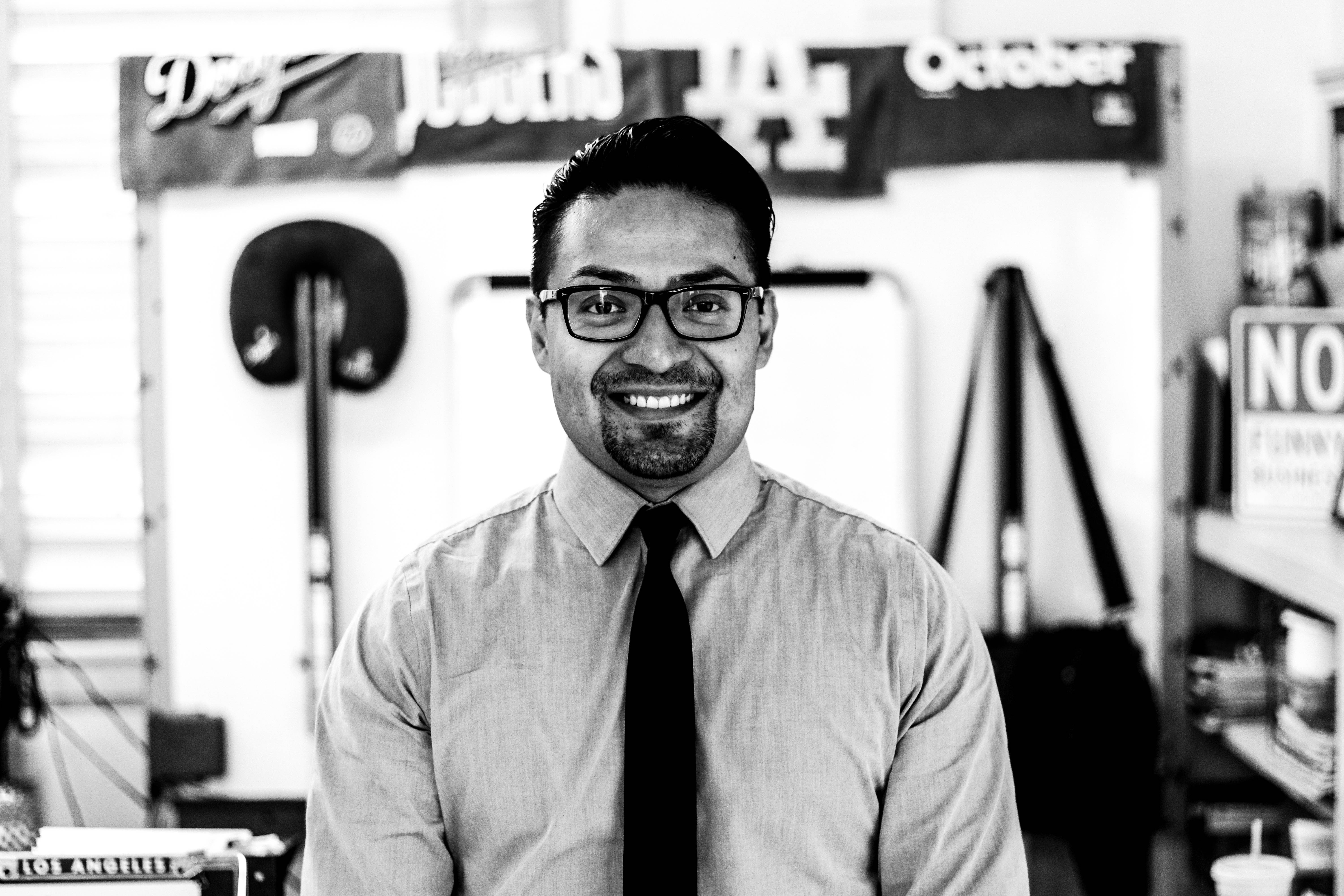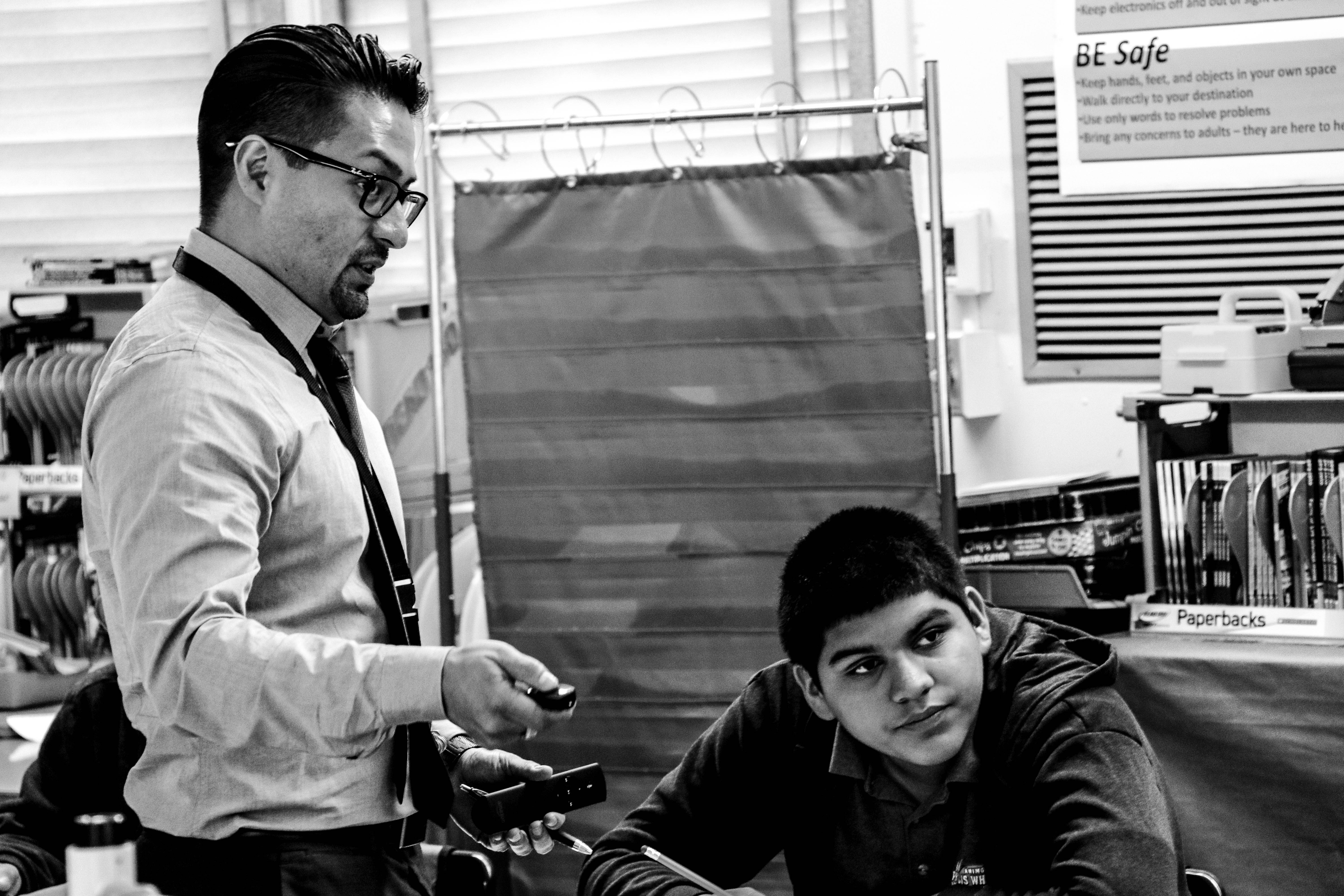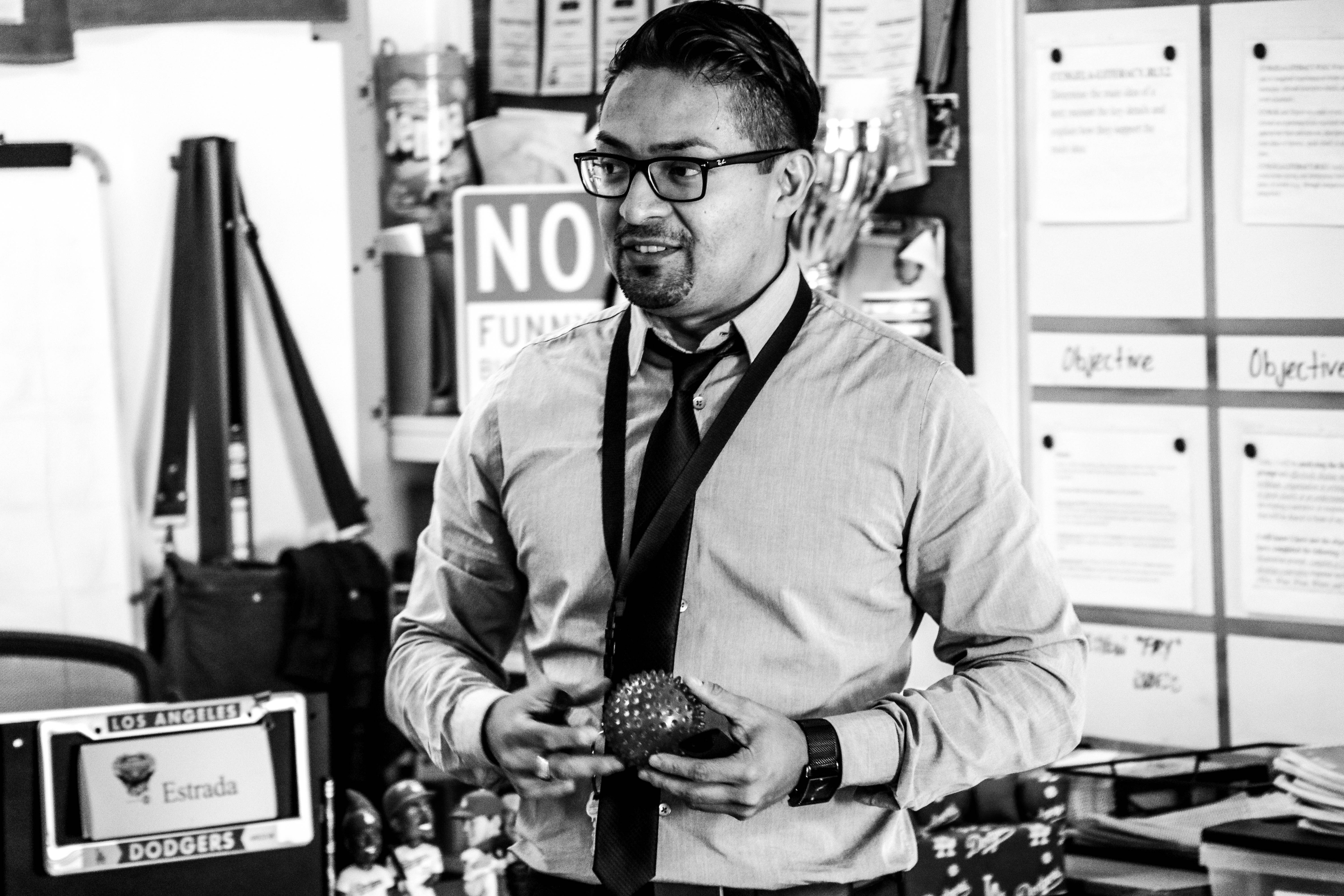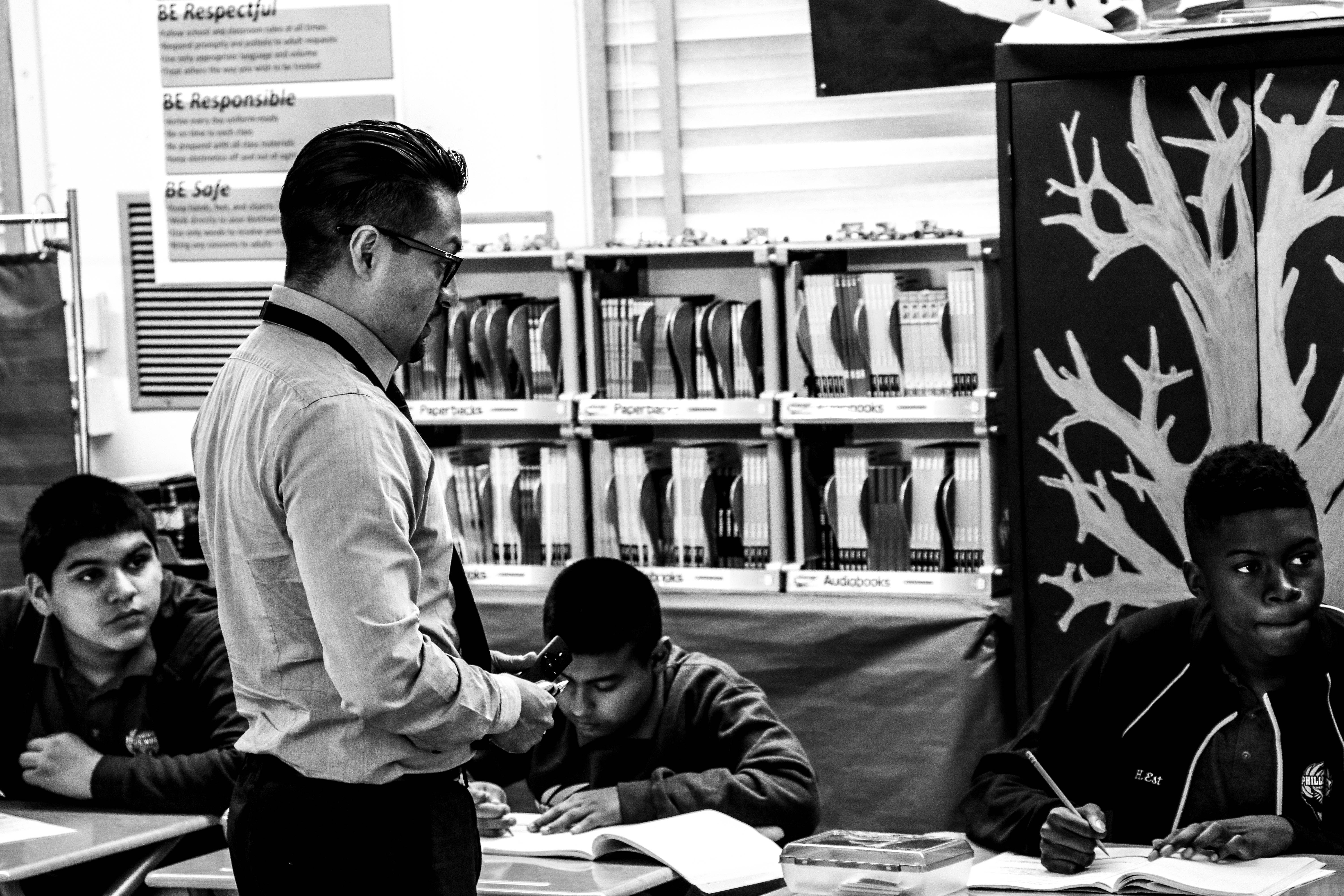Holding All Students to High Standards: A Look at Special Education at Green Dot Public Schools

In 2011, Hugo Estrada worked as a behavior therapist for a third-party agency where he served students at a variety of schools in the greater Los Angeles area. When assigned to Ánimo Phillis Wheatley Charter Middle School (APW), Estrada immediately noticed the Green Dot difference. Estrada, now an Education Specialist at APW, never imagined that he would become an educator, even though he has always loved working with students.
The Green Dot Difference
As a behavior therapist, Estrada worked one-on-one with students and developed behavior based intervention plans. “Through the third-party agency it was hard to build relationships at school sites, because I was always assigned to different schools and by the time I learned the names of staff and administrators at one school, the assignment would be over and I’d be at a new school,” recalled Estrada. “However, when I got to APW, I was welcomed immediately. I found the culture at Green Dot to be so much more receptive and supportive than what I encountered at other places.” He was aware of the magnitude change educators can make in the lives of students, but for the first time, he felt he was at a place that magnified and fully supported that change.

Estrada knew the transition from behavior therapist to SPED educator would not come without its challenges, but realized the work he’d be doing would be both impactful and rewarding. “I grew up in South Central [Los Angeles], so I understand the need for higher quality public education options in our communities,” said Estrada.
“When I first started teaching for Green Dot, I had one student who was new to APW, and on the first day he asked me, ‘When are we going to watch movies?’” chuckled Estrada.
He told the student that it was only day one of class and that he didn’t have any movies in his classroom. To Estrada’s surprise, the student pulled out a large binder from his backpack that held over 30 DVD’s and said, “Well I have a lot of options.” Throughout the year, the student would reference his old school until one day he told Estrada, “I don’t want to go back to my old school, it was fun, but I learn and have more fun here.”
It was apparent from the school culture, the level and quality of instruction, and most of all, the genuine belief in the potential of all students and educators, that this was a place for him. “When I was assigned to other schools, it wasn’t uncommon for the students in the special education (SPED) programs to watch movies, color, play games, and celebrate birthdays most of the day,” recalled Estrada. “However, at Green Dot, I found there to be high expectations for all students regardless of their abilities.”
A Program, Not a Place
At Green Dot, our Special Education is a program, not a place. It is a program that does not consider its students’ special needs as an excuse for lowered expectations, but rather it focuses on students’ academic and socioemotional well-being and success.
The autism program at APW serves sixth through eighth graders and provides daily instruction of general education courses such as English, math, science, and history. Within their daily curriculum, students in the autism program are able to develop social skills through social awareness learning, which is embedded within their daily curriculum. For example, when students are reading about a character or even a historical figure, they are asked to consider that person or character’s actions, and thoughts.

Students in the program typically spend the school day with Estrada, but many have been able to transition out for much of the day–a sign of significant academic improvement. Moving into a general education classroom allows opportunities for enhanced skill acquisition, and provides additional peer role models for social, academic, and behavior skills. Transitioning students into this environment is done with meaningful support.

“At Green Dot, students are succeeding and finding their way into general education environments. It’s a push you don’t always encounter at other schools,” said Estrada.
Estrada supports his students in their transition to general education classrooms and pushes them to think deeply about the social situations they have or might encounter, consider other people’s emotions, and respond based on those factors. Equipping students with these tools will allow them to successfully navigate high school, college, and beyond.
“I work with children who have a disability and sometimes the behavior they exhibit is a manifestation of just that,” said Estrada. “As a SPED educator, it’s my hope that I’m able to understand students, and provide the effective support for the other teachers who work with my students, as well as the families who trust us to educate their children.”
